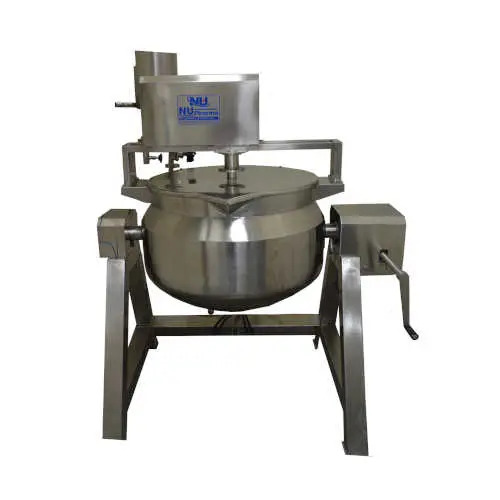Liquid Filling and Sealing Line
100000.00 INR/Set
Product Details:
- Type Sealing Line
- Material Stainless Steel
- Computerized Yes
- Control Mode Automatic
- Voltage 220 Volt (v)
- Color Silver
- Warranty 1 Year
- Click to view more
X
Liquid Filling and Sealing Line Price
- 100000.00 INR/Set
- 1 Set
Liquid Filling and Sealing Line Details
- Automatic
- 220 Volt (v)
- Yes
- Silver
- Sealing Line
- 1 Year
- Stainless Steel
Liquid Filling and Sealing Line Trade Information
- 1 Set Per Day
- 1-8 Week
- Standard
- Australia, Africa, Asia
- All India
- ISO Certified
Product Description
This precisely developed Liquid Filling and Sealing Line has attained popularity in the market for its low wastage rate, high filling and sealing speed, low operating cost and ability to save project time. Suitable for small and medium scale enterprises, this machine is made of 304 grade stainless steel. Apart from its adjustable parameters, this equipment is praised for its automatic shifting of pouch or packaging material after filling liquid. It uses PVC or PP as its packaging material. The viton or EPDM made sealing section of this machine ensures error free and even sealing. We are a renowned exporter and manufacturer of finest grade Liquid Filling and Sealing Line.
Features of Liquid Filling and Sealing Line
Liquid Filling and Sealing Line is a high-performance production system that is in high demand within various industries due to the following features: - Automated container feeding system which ensures continuous supply of materials for filling of empty containers.
- The sensor-based filling machine helps to deliver liquid in calculated amounts.
- Capping or Sealing Machine to make a secured seal for the prevention of liquid spilling.
- Heavy-duty conveyor System to move containers along the filling and cap sealing line.
- To check the integrity of containers, filling levels, and detection of leaks is efficiently done with the help of its advanced inspection system.
- Fully automated control panel to easily adjust control parameters.
- Integrated design which makes sit compatible with other systems such as mixers, homogenizers, or product-specific components.
FAQs: Liquid Filling and Sealing Line
What is a liquid filling and sealing line?
A liquid filling and sealing line is an advanced fully automated industrial system that can be used in food, beverage, pharmaceutical, and chemical industries for filling and sealing of liquid products. It is designed to improve packaging efficiency as well as eliminate the risk of material wastage. This machine is capable to handle low as well as highly viscous materials in plastic and glass containers.
What are the components of a liquid filling and sealing line?
There are several components that are used within Liquid Filling and Sealing Line to ensure streamlined functioning. Some of the common parts are: - Filling System: It is designed to accurately fill the liquid product into containers.
- Capping machine: After filling the containers are moved to the sealing system to secure the open top with an airtight seal.
- Labeling machine: It may or may not come with a labeling system to paste product labels on the containers.
- Conveyor system: This heavy-duty material handling unit helps transport containers along the filling and sealing line.
- Inspection equipment: this advanced system is equipped with best-in-class sensors, cameras, or other systems to check for the quality of the resultant product.
- Control systems: The machine comes with a simple-to-use control panel to control the operational parameters.
How does a liquid filling and sealing line work?
The working of the liquid filling and sealing line involves the following steps:- Feeding of containers into the machine with the help of an automated system.
- As the container moved to the filling station, the filling gets actuated to accurately dispense the liquid in the required amount of product.
- From the filling station, the containers were then moved to the capping and sealing station to make a secured seal over the bottles.
- After that containers are passed to labeling or inspection to perform labeling operation and quality checks.
- Finally, the containers are discharged for storage and distribution.
List the benefits of using a liquid filling and sealing line?
The Liquid Filling and Sealing line system is one of the popular choices due to the following advantages:- High operational efficiency due to its improved production speed and automated operation.
- Consistent and accurate filling that helps to deliver products with high quality and uniformity.
- The closed system design of this industrial unit improves hygiene and cleanliness.
- The low power consumption and less requirement of labor force make it highly cost-efficient.
- High flexibility and versatility make it compatible with different-sized containers and filling substances.
- The advanced quality control within this industrial machine helps you to identify and reject faulty containers to deliver high-quality products.
What are the challenges of using a liquid filling and sealing line?
Challenges that you may face while using the liquid filling and sealing line: - Budget planning, Investment, and initial setup.
- Training of operators.
- Maintenance and downtime.
- Change over time.
- Regulatory compliance.
Tell us about your requirement

Price:
Quantity
Select Unit
- 50
- 100
- 200
- 250
- 500
- 1000+
Additional detail
Mobile number
Email









 Call Me Free
Call Me Free
